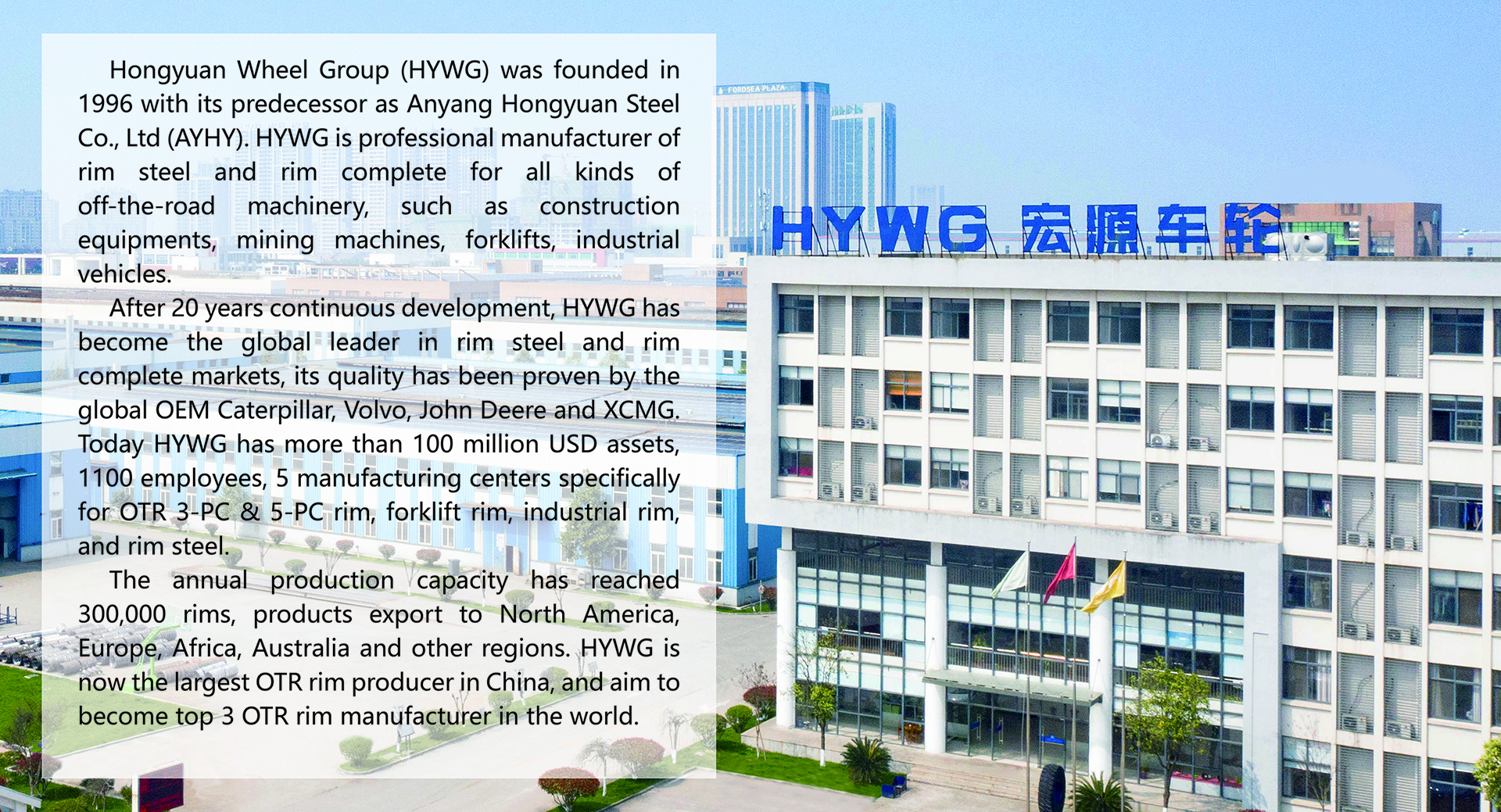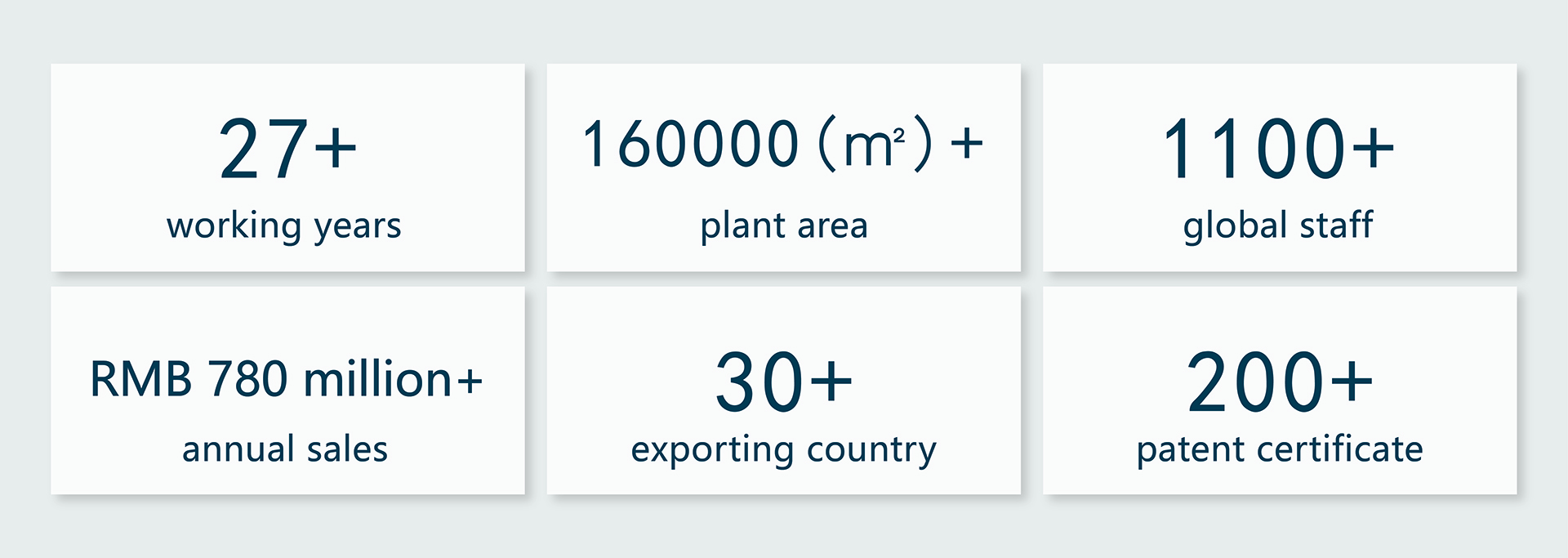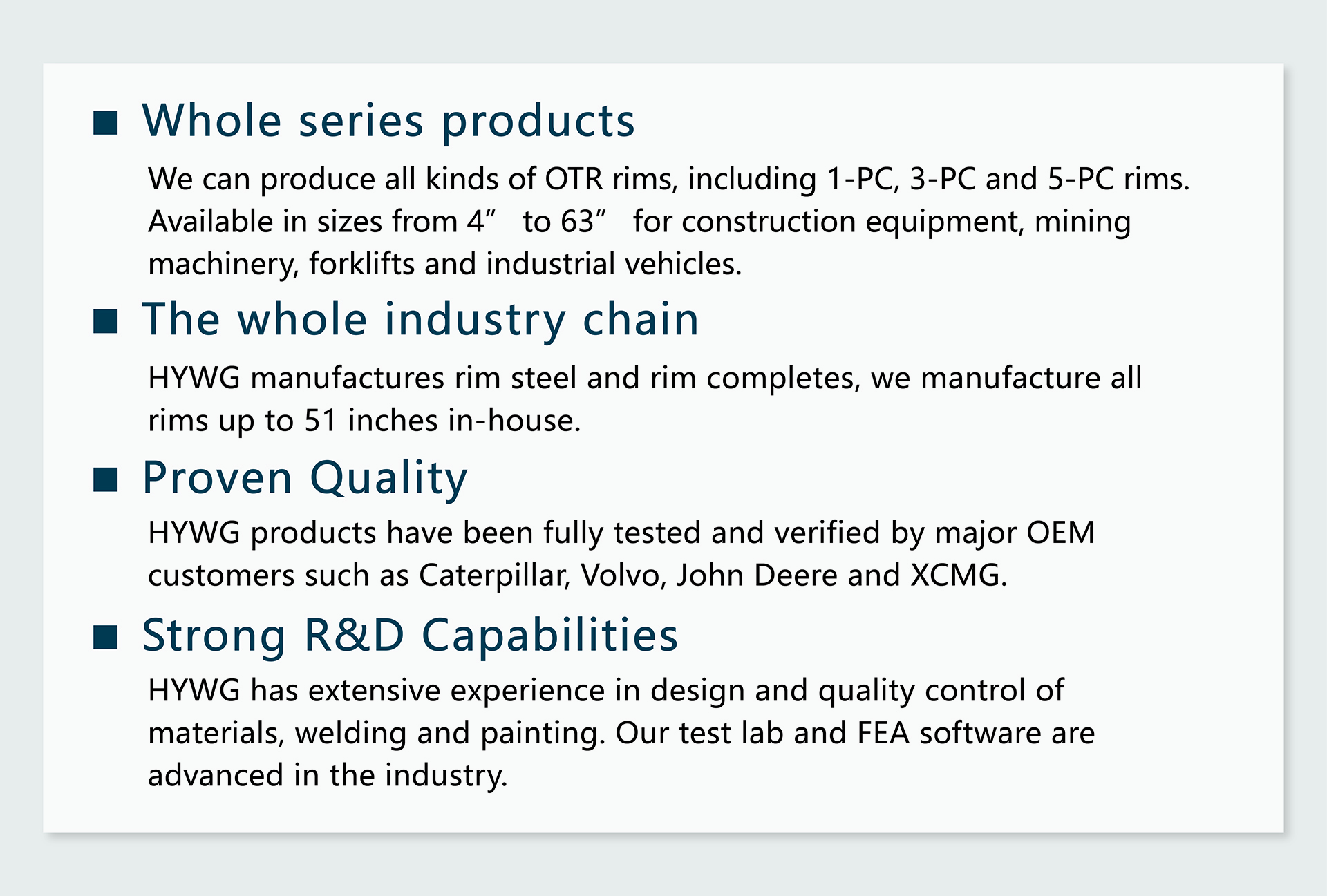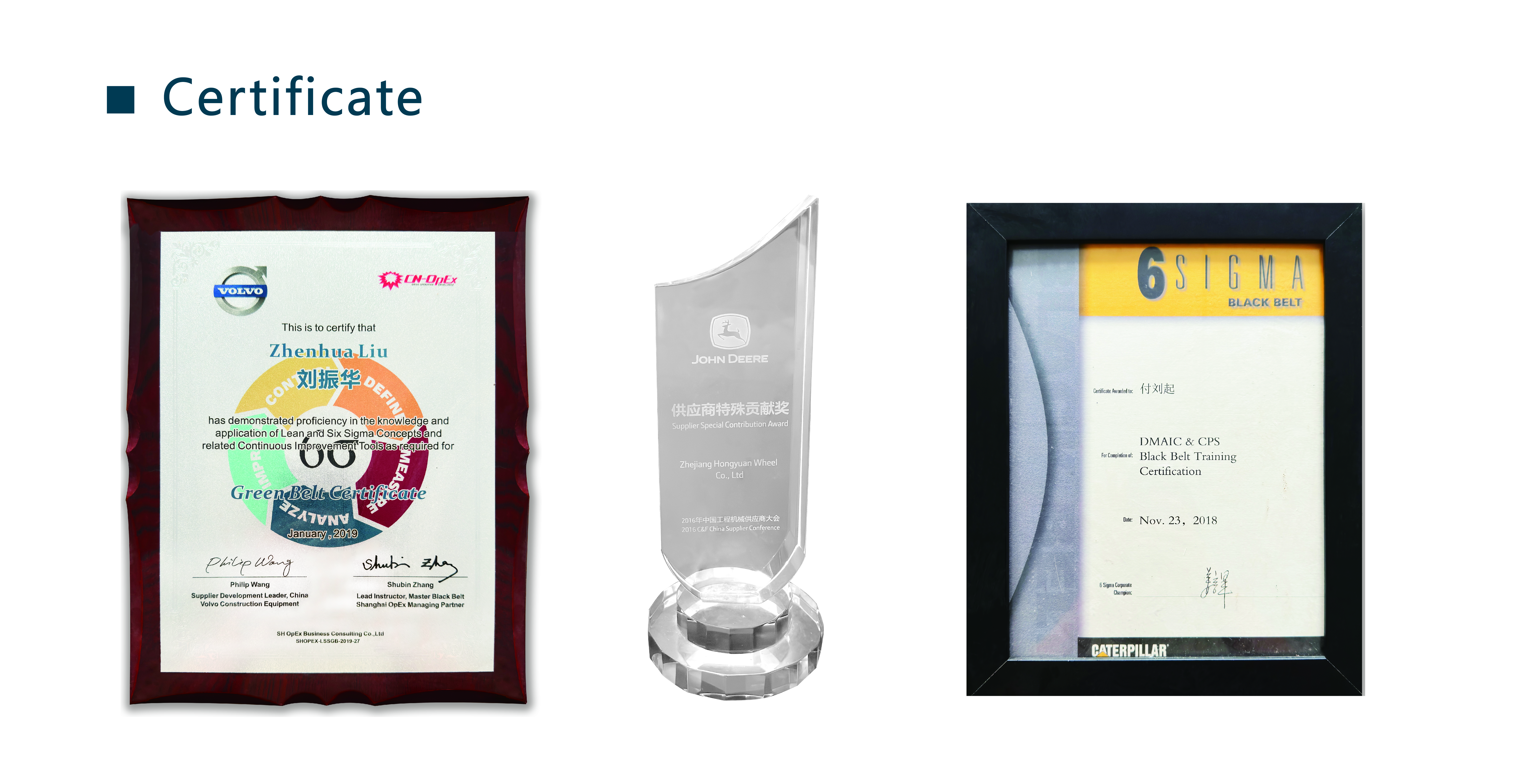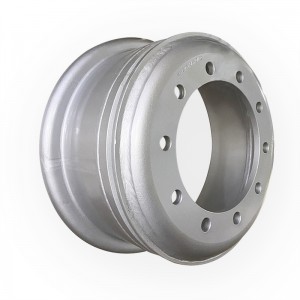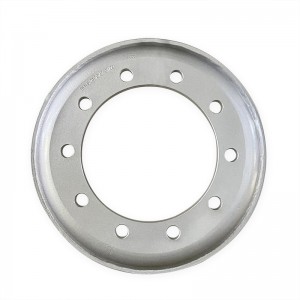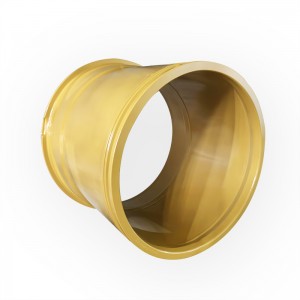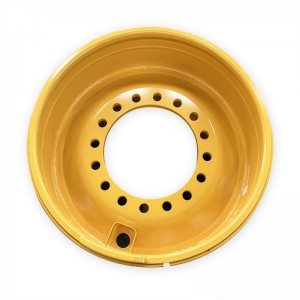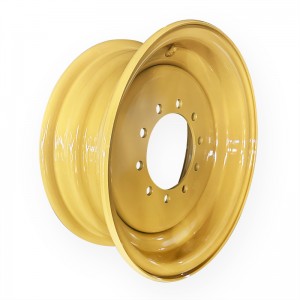7.50-20/1.7 rim for Construction Equipment Wheeled excavator Universal
A solid tire, also known as a non-pneumatic tire or airless tire, is a type of tire that does not rely on air pressure to support the vehicle's load. Unlike traditional pneumatic (air-filled) tires that contain compressed air to provide cushioning and flexibility, solid tires are constructed using solid rubber or other resilient materials. They are commonly used in various applications where durability, puncture resistance, and low maintenance are important factors.
Here are some key characteristics and applications of solid tires:
1. **Construction**: Solid tires are typically made from solid rubber compounds, polyurethane, foam-filled materials, or other resilient materials. Some designs incorporate a honeycomb structure for added shock absorption.
2. **Airless Design**: The absence of air in solid tires eliminates the risk of punctures, leaks, and blowouts. This makes them suitable for applications where puncture resistance is crucial, such as construction sites, industrial settings, and outdoor equipment.
3. **Durability**: Solid tires are known for their durability and longevity. They can withstand heavy loads, rough terrains, and harsh environments without the risk of deflation or damage due to punctures.
4. **Low Maintenance**: Since solid tires don't require inflation and are resistant to punctures, they require less maintenance compared to pneumatic tires. This can reduce downtime and maintenance costs.
5. **Applications**:
- **Industrial Equipment**: Solid tires are commonly used on forklifts, material handling equipment, and industrial vehicles operating in warehouses, factories, and distribution centers.
- **Construction Equipment**: Solid tires are preferred for construction equipment like skid-steer loaders, backhoes, and telehandlers due to their ability to handle heavy loads and rugged conditions.
- **Outdoor Power Equipment**: Lawn mowers, wheelbarrows, and other outdoor equipment can benefit from the durability and puncture resistance of solid tires.
- **Mobility Aids**: Some mobility devices, like wheelchairs and mobility scooters, use solid tires for reliability and reduced maintenance.
6. **Ride Comfort**: One drawback of solid tires is that they generally provide a less cushioned ride compared to pneumatic tires. This is because they lack the air-filled cushion that absorbs shocks and impacts. However, some designs incorporate shock-absorbing technologies to mitigate this issue.
7. **Specific Use Cases**: While solid tires offer advantages in terms of durability and puncture resistance, they might not be suitable for all applications. Vehicles that require a smoother and more comfortable ride, such as passenger cars and bicycles, typically use pneumatic tires.
In summary, solid tires are designed to provide durability, puncture resistance, and reduced maintenance for applications where these characteristics are essential. They are commonly found on industrial equipment, construction vehicles, and outdoor machinery. However, due to their unique ride characteristics and design limitations, they are best suited for specific use cases where the benefits outweigh the drawbacks.
More Choices
| Wheeled excavator | 7.00-20 |
| Wheeled excavator | 7.50-20 |
| Wheeled excavator | 8.50-20 |
| Wheeled excavator | 10.00-20 |
| Wheeled excavator | 14.00-20 |
| Wheeled excavator | 10.00-24 |
